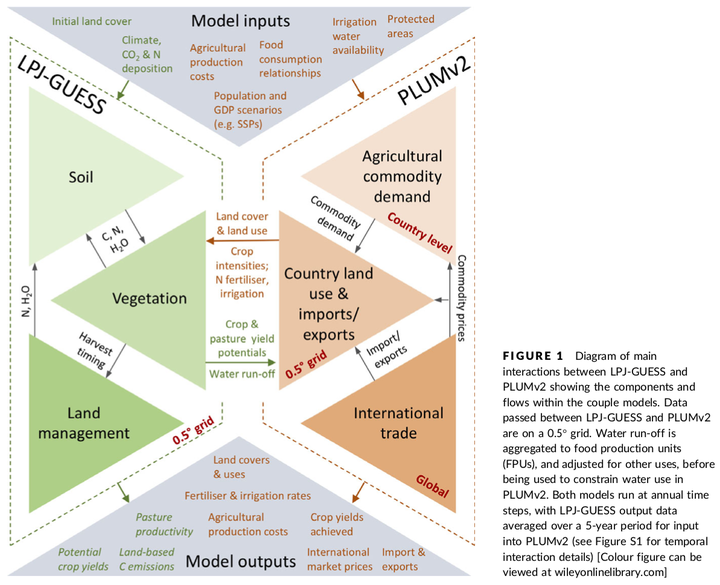Adaptation of global land use and management intensity to changes in climate and atmospheric carbon dioxide

Abstract
Land use contributes to environmental change, but is also influenced by such changes. Climate and atmospheric carbon dioxide (CO2) levels' changes alter agricultural crop productivity, plant water requirements and irrigation water availability. The global food system needs to respond and adapt to these changes, for example, by altering agricultural practices, including the crop types or intensity of management, or shifting cultivated areas within and between countries. As impacts and associated adaptation responses are spatially specific, understanding the land use adaptation to environmental changes requires crop productivity representations that capture spatial variations. The impact of variation in management practices, including fertiliser and irrigation rates, also needs to be considered. To date, models of global land use have selected agricultural expansion or intensification levels using relatively aggregate spatial representations, typically at a regional level, that are not able to characterise the details of these spatially differentiated responses.
Here, we show results from a novel global modelling approach using more detailed biophysically derived yield responses to inputs with greater spatial specificity than previously possible. The approach couples a dynamic global vegetative model (LPJ-GUESS) with a new land use and food system model (PLUMv2), with results benchmarked against historical land use change from 1970. Land use outcomes to 2100 were explored, suggesting that increased intensity of climate forcing reduces the inputs required for food production, due to the fertilisation and enhanced water use efficiency effects of elevated atmospheric CO2 concentrations, but requiring substantial shifts in the global and local patterns of production.
The results suggest that adaptation in the global agriculture and food system has substantial capacity to diminish the negative impacts and gain greater benefits from positive outcomes of climate change. Consequently, agricultural expansion and intensification may be lower than found in previous studies where spatial details and processes consideration were more constrained.